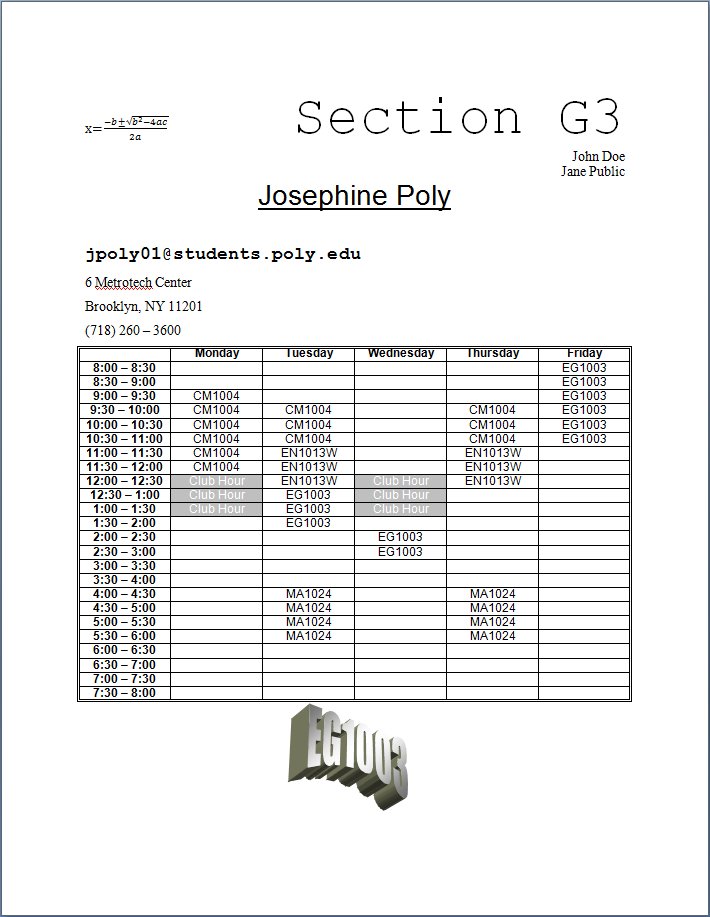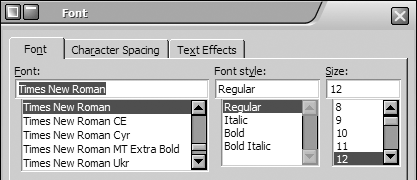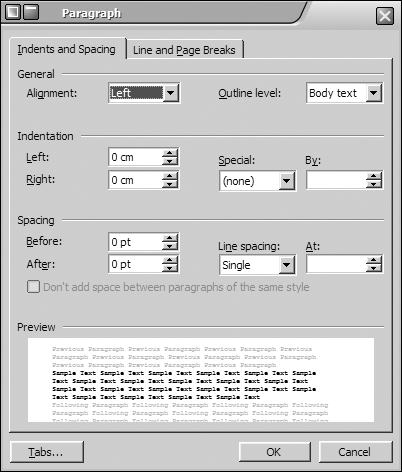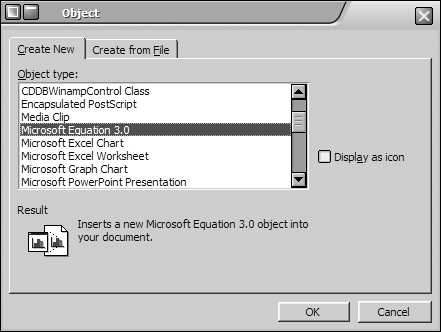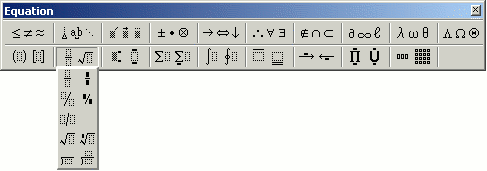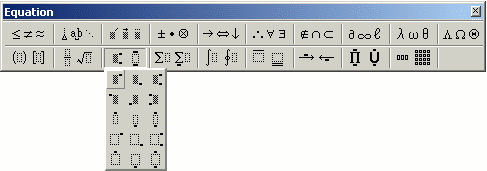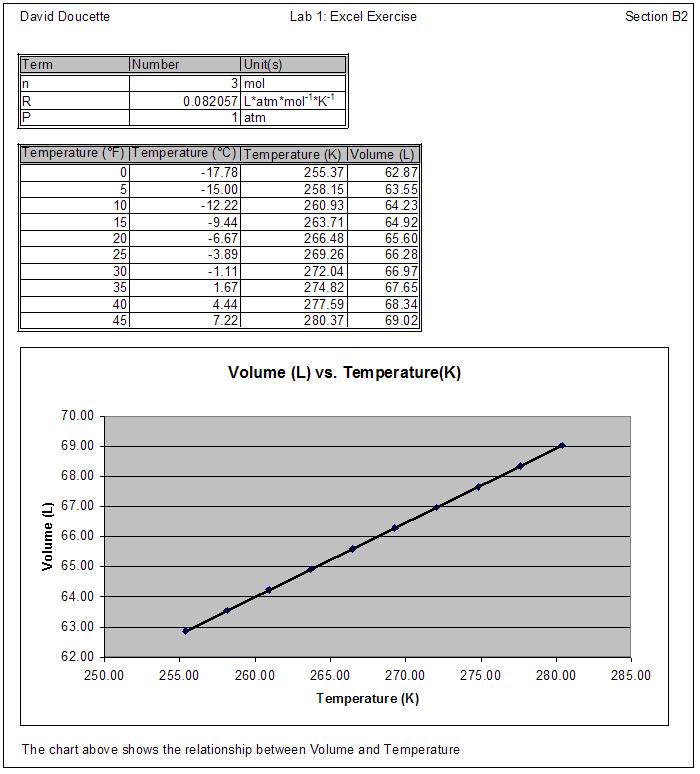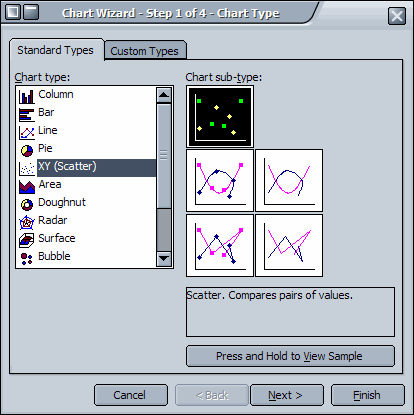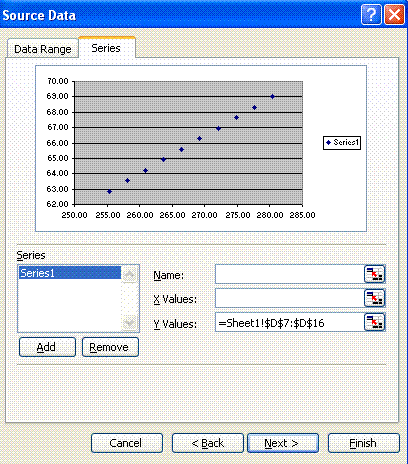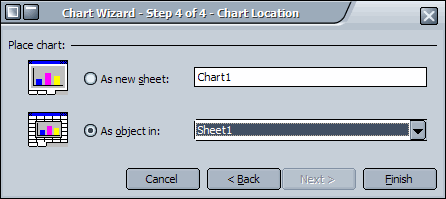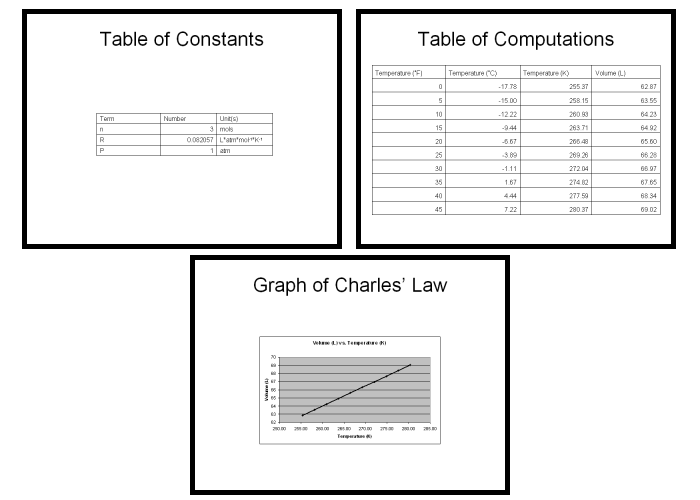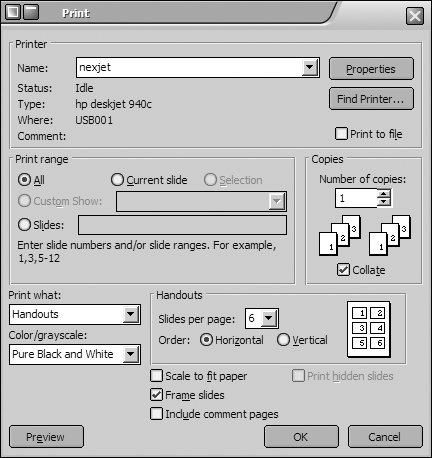Difference between revisions of "Microsoft Office Skill Builder"
| (3 intermediate revisions by the same user not shown) | |||
| Line 99: | Line 99: | ||
<p><b><font color=#ff0000>IMPORTANT</font></b> Submit your report electronically through the EG 1004 | <p><b><font color=#ff0000>IMPORTANT</font></b> Submit your report electronically through the EG 1004 | ||
website: http://eg.poly.edu. You will need to login and upload the lab | website: http://eg.poly.edu. You will need to login and upload the lab | ||
report material. Submission instructions, a sample coversheet, and a calendar showing the deadlines for | report material. Please copy all of the Microsoft Word exercises into ONE Microsoft Word file. Submission instructions, a sample coversheet, and a calendar showing the deadlines for your section are listed on the website. You must hand in a hardcopy of the PowerPoint presentation (one copy per team) you have prepared at the beginning of each recitation period. You will present this during recitation with the team member(s) you worked with during lab. It will be used to help in grading your oral presentation.</p> | ||
your section are listed on the website. You must hand in a hardcopy of the PowerPoint presentation you have | |||
prepared at the beginning of each recitation period. It will be used to help in grading your oral | |||
presentation.</p> | |||
== <h2>1.4 MATERIALS AND EQUIPMENT</h2> == | == <h2>1.4 MATERIALS AND EQUIPMENT</h2> == | ||
| Line 127: | Line 124: | ||
<p>You are going to create two Microsoft Word documents. One will look like Figure 1.1 below.</p> | <p>You are going to create two Microsoft Word documents. One will look like Figure 1.1 below.</p> | ||
<p align=center>[[Image: | <p align=center>[[Image:lab_intro-1.JPG]]</p> | ||
<p class=caption>Figure 1.1: Generic Word document</p> | <p class=caption>Figure 1.1: Generic Word document</p> | ||
| Line 133: | Line 130: | ||
<p>The other will be personalized, and will look like Figure 1.2.</p> | <p>The other will be personalized, and will look like Figure 1.2.</p> | ||
<p align=center>[[Image: | <p align=center>[[Image:lab_intro_2.jpg]]</p> | ||
<p class=caption>Figure 1.2: Personalized Word document</p> | <p class=caption>Figure 1.2: Personalized Word document</p> | ||
| Line 146: | Line 143: | ||
alignment buttons looks like this:</p> | alignment buttons looks like this:</p> | ||
<p>[[Image: | <p>[[Image:lab_intro_3.gif]]</p> | ||
<li>On the blank MS Word document page that opens, type the text in quotes below, without including the | <li>On the blank MS Word document page that opens, type the text in quotes below, without including the | ||
| Line 167: | Line 164: | ||
fonts (see figures 1.3).</p> | fonts (see figures 1.3).</p> | ||
<p align=center>[[Image: | <p align=center>[[Image:lab_intro_4.gif]]</p> | ||
<p class=caption>Figure 1.3: Fonts dialog box</p> | <p class=caption>Figure 1.3: Fonts dialog box</p> | ||
| Line 173: | Line 170: | ||
<p>Use the Paragraph dialog box, found in the Format menu, to get the required alignment (see figure 1.4).</p> | <p>Use the Paragraph dialog box, found in the Format menu, to get the required alignment (see figure 1.4).</p> | ||
<p align=center>[[Image: | <p align=center>[[Image:lab_intro_5.gif]]</p> | ||
<p class=caption>Figure 1.4 Paragraph dialog box</p> | <p class=caption>Figure 1.4 Paragraph dialog box</p> | ||
| Line 199: | Line 196: | ||
<li>From the Insert menu select Object. The box shown in Figure 1.5 will appear.</li> | <li>From the Insert menu select Object. The box shown in Figure 1.5 will appear.</li> | ||
<p align=center>[[Image: | <p align=center>[[Image:lab_intro_6.gif]]</p> | ||
<p class=caption>Figure 1.5: Object dialog box</p> | <p class=caption>Figure 1.5: Object dialog box</p> | ||
| Line 206: | Line 203: | ||
toolbar shown in Figure 1.6 will appear.</li> | toolbar shown in Figure 1.6 will appear.</li> | ||
<p align=center>[[Image: | <p align=center>[[Image:lab_intro_7.gif]]</p> | ||
<p class=caption>Figure 1.6: Equation toolbar</p> | <p class=caption>Figure 1.6: Equation toolbar</p> | ||
| Line 217: | Line 214: | ||
<li>Select the ratio option from the Equation palette (see Figure 1.7).</li> | <li>Select the ratio option from the Equation palette (see Figure 1.7).</li> | ||
<p align=center><b><i>[[Image: | <p align=center><b><i>[[Image:lab_intro_8.gif]]</i></b></p> | ||
<p class=caption>Figure 1.7: ratio menu</p> | <p class=caption>Figure 1.7: ratio menu</p> | ||
| Line 223: | Line 220: | ||
<li>Type “-b�? and then select the plus-or-minus symbol from the Equation palette (see Figure 1.8).</li> | <li>Type “-b�? and then select the plus-or-minus symbol from the Equation palette (see Figure 1.8).</li> | ||
<p align=center>[[Image: | <p align=center>[[Image:lab_intro_9.gif]]</p> | ||
<p class=caption>Figure 1.8: plus-or-minus symbol</p> | <p class=caption>Figure 1.8: plus-or-minus symbol</p> | ||
| Line 232: | Line 229: | ||
menu on the Equation palette (see figure 1.9).</li> | menu on the Equation palette (see figure 1.9).</li> | ||
<p align=center>[[Image: | <p align=center>[[Image:lab_intro_10.gif]]</p> | ||
<p class=caption>Figure 1.9: super/subscript menu</p> | <p class=caption>Figure 1.9: super/subscript menu</p> | ||
| Line 256: | Line 253: | ||
<li>From the Table menu select Insert, then Table.The box shown in Figure 1.10 will appear.</li> | <li>From the Table menu select Insert, then Table.The box shown in Figure 1.10 will appear.</li> | ||
<p align=center>[[Image: | <p align=center>[[Image:lab_intro_11.gif]]</p> | ||
<p class=caption>Figure 1.10: Insert Table dialog box</p> | <p class=caption>Figure 1.10: Insert Table dialog box</p> | ||
| Line 357: | Line 354: | ||
different value for the number of moles, n. The relationship you will graph is known as Charles’ Law. When | different value for the number of moles, n. The relationship you will graph is known as Charles’ Law. When | ||
you are finished, your document will look like Figure 1.11.</p> | you are finished, your document will look like Figure 1.11.</p> | ||
<p align=center>[[Image: | <p align=center>[[Image:lab_intro_12.jpg]]</p> | ||
<p class=caption>Figure 1.11: Excel Document</p> | <p class=caption>Figure 1.11: Excel Document</p> | ||
| Line 368: | Line 365: | ||
menu and click on the Custom Header button (See Figure 1.12).</li> | menu and click on the Custom Header button (See Figure 1.12).</li> | ||
<p align=center>[[Image: | <p align=center>[[Image:lab_intro_13.jpg]]</p> | ||
<p class=caption>Figure 1.12: Custom Header dialog box</p> | <p class=caption>Figure 1.12: Custom Header dialog box</p> | ||
<li>In the Left section: box type your name. In the Center section: box type “Lab 1: Excel Exercise.�? In the Right section: | <li>In the Left section: box type your name. In the Center section: box type “Lab 1: Excel Exercise.�? In the Right section: | ||
box type your section.</li> | box type your section. Click "OK" to save this information. Click "OK" again to remove the "Page Setup" window and return to | ||
the spreadsheet.</li> | |||
</ol> | </ol> | ||
| Line 439: | Line 437: | ||
<p>You will use the following expression to convert your simulated data into degrees Celsius:</p> | <p>You will use the following expression to convert your simulated data into degrees Celsius:</p> | ||
<p align=center>[[Image: | <p align=center>[[Image:lab_intro_14.gif]]</p> | ||
<ol> | <ol> | ||
| Line 453: | Line 451: | ||
<p>You will then use the following expression to convert your data into Kelvin:</p> | <p>You will then use the following expression to convert your data into Kelvin:</p> | ||
<p align=center><sub>[[Image: | <p align=center><sub>[[Image:lab_intro_15.gif]]</sub></p> | ||
<ol> | <ol> | ||
| Line 468: | Line 466: | ||
<p>You will use the ideal gas law expression to compute the volume for your exercise:</p> | <p>You will use the ideal gas law expression to compute the volume for your exercise:</p> | ||
<p align=center>[[Image: | <p align=center>[[Image:lab_intro_16.gif]]</p> | ||
<ol> | <ol> | ||
| Line 492: | Line 490: | ||
<li>Double-click the right edge of the column (see Figure 1.13).</li> | <li>Double-click the right edge of the column (see Figure 1.13).</li> | ||
<p align=center>[[Image: | <p align=center>[[Image:lab_intro_17.gif]]</p> | ||
<p class=caption>Figure 1.13: Column Edge</p> | <p class=caption>Figure 1.13: Column Edge</p> | ||
| Line 516: | Line 514: | ||
</ol> | </ol> | ||
<p align=center>[[Image: | <p align=center>[[Image:lab_intro_18.gif]]</p> | ||
<p class=caption>Figure 1.14: Format Cells dialog box</p> | <p class=caption>Figure 1.14: Format Cells dialog box</p> | ||
| Line 527: | Line 525: | ||
<li>Select the volume values in cells <b><i>D7–D16</i></b>.</li> | <li>Select the volume values in cells <b><i>D7–D16</i></b>.</li> | ||
<li>Click the Chart Wizard button.[[Image: | <li>Click the Chart Wizard button.[[Image:lab_intro_19.gif]]</li> | ||
<li>In the Chart Type dialog box, select XY (Scatter) chart type and leave the chart subtype | <li>In the Chart Type dialog box, select XY (Scatter) chart type and leave the chart subtype | ||
at the default setting (see Figure 1.15), then click Next.</li> | at the default setting (see Figure 1.15), then click Next.</li> | ||
<p align=center>[[Image: | <p align=center>[[Image:lab_intro_20.gif]]</p> | ||
<p class=caption>Figure 1.15: Chart Type dialog box</p> | <p class=caption>Figure 1.15: Chart Type dialog box</p> | ||
<li>In the Chart Source dialog box, select the Series tab, as shown in Figure 1.16.</li> | <li>In the Chart Source dialog box, select the Series tab, as shown in Figure 1.16.</li> | ||
<p align=center>[[Image: | <p align=center>[[Image:lab_intro_21.gif]]</p> | ||
<p class=caption>Figure 1.16: Chart Source dialog box</p> | <p class=caption>Figure 1.16: Chart Source dialog box</p> | ||
| Line 546: | Line 544: | ||
<li>Click Next and the Chart Options dialog box will appear (see Figure 1.17).<b><i></i></b></li> | <li>Click Next and the Chart Options dialog box will appear (see Figure 1.17).<b><i></i></b></li> | ||
<p align=center>[[Image: | <p align=center>[[Image:lab_intro_22.gif]]</p> | ||
<p class=caption>Figure 1.17: Chart Options dialog box</p> | <p class=caption>Figure 1.17: Chart Options dialog box</p> | ||
| Line 558: | Line 556: | ||
<li>Click Next and the Chart Location dialog box will appear (see Figure 1.18).</li> | <li>Click Next and the Chart Location dialog box will appear (see Figure 1.18).</li> | ||
<p align=center>[[Image: | <p align=center>[[Image:lab_intro_23.gif]]</p> | ||
<p class=caption>Figure 1.18: Chart Location dialog box</p> | <p class=caption>Figure 1.18: Chart Location dialog box</p> | ||
| Line 619: | Line 617: | ||
slides might look like.</p> | slides might look like.</p> | ||
<p align=center>[[Image: | <p align=center>[[Image:lab_intro_24.gif]]</p> | ||
<p class=caption>Figure 1.19: Typical PowerPoint slides</p> | <p class=caption>Figure 1.19: Typical PowerPoint slides</p> | ||
| Line 632: | Line 630: | ||
the title of your presentation. </li> | the title of your presentation. </li> | ||
<p align=center>[[Image: | <p align=center>[[Image:lab_intro_25.jpg]]</p> | ||
<p class=caption>Figure 1.20: Microsoft PowerPoint, main window. Your screen will look like | <p class=caption>Figure 1.20: Microsoft PowerPoint, main window. Your screen will look like | ||
| Line 670: | Line 668: | ||
<li>From the File menu select Print. The box in Figure 1.21 will appear.</li> | <li>From the File menu select Print. The box in Figure 1.21 will appear.</li> | ||
<p align=center>[[Image: | <p align=center>[[Image:lab_intro_26.gif]]</p> | ||
<p class=caption>Figure 1.21: Microsoft PowerPoint Print dialog box.</p> | <p class=caption>Figure 1.21: Microsoft PowerPoint Print dialog box.</p> | ||
Revision as of 19:16, 3 August 2005
EG1004 Lab 1: Introduction to Engineering Computing Tools
1.1 OBJECTIVES
The objective of this lab is to use Microsoft Word, Excel, and PowerPoint to perform specific exercises and learn which programs are best suited to particular tasks. Your goal, after having completed the assigned tasks, is to have a basic familiarity with these three software tools.
1.2 OVERVIEW
This lab is designed to introduce you to three Microsoft applications: Word, Excel, and PowerPoint. Mastering these programs is essential for you to complete your assignments in EG 1004. These software tools are widely used in academic settings as well as in business and industry. Many of you may already be familiar with some of the things they can do. The following exercises are designed to ensure you have a well defined set of basic skills, so please complete all the required tasks.
Microsoft Word
Microsoft Word is a word processing program; its function is to help you create and edit text. It has features that make the mechanics of technical writing relatively easy, but it also has features that make academic dishonesty and plagiarism very easy, too. You are expected to do all the exercises and assignments for this (and all other courses) yourself, unless you are specifically told otherwise, e.g., when you do a team report.
You can create tables and write equations in Word. It also has spelling and grammar checkers and a thesaurus to help you eliminate mistakes in your writing. But beware: running spelling and grammar checks does not eliminate the need for careful editing of all your documents. As powerful as these tools are, they are not foolproof.
In this course, you will use Word to write lab reports, software documentation, and proposals. The thesaurus allows you to quickly find synonyms, so that you can avoid boring repetition in your writing. To use the Thesaurus, put the cursor anywhere within the word for which you would like to find a synonym. Pull down the Tools menu and select Language, then Thesaurus. You can also right-click on the word and select Synonyms.
Microsoft Excel
Data collection, manipulation, and analysis are critical steps in the research and design phases of any project. Data can come from a variety of sources including experiments and design calculations. Microsoft Excel, a spreadsheet program, allows you to compile and analyze your data in a systematic fashion.
Excel has many features that streamline data analysis. You can use it to generate tables, charts, and graphs. Excel includes formatting tools, editing features, built-in functions, data manipulation capabilities, and graphing features. It is especially useful for uncovering the relationships that exist between data and to identify trends. You will use it to create graphical elements that will be embedded in your reports, proposals, and presentations.
Microsoft PowerPoint
Microsoft PowerPoint is a presentation program; its function is to create slides for presentations. Presenting information has always been intrinsic to engineering projects. Product introductions, requests for funding, progress reports, and reports to management are just some examples of occasions where presentation skills are required by technical professionals.
Remember, PowerPoint is a tool that will help you make better presentations. It is not a substitute for the longstanding rules to which good public speakers have always adhered. It is most effective when you use it to illustrate the points you want your audience to understand. In EG, you will use PowerPoint to report on your lab work and to present your progress on your Independent Project.
These software tools are essential to your success in EG and beyond. This lab is designed to help you master them by having you perform a specific set of tasks.
1.3 YOUR ASSIGNMENT
Team PowerPoint Presentation and Individual Lab Report
(one presentation per team and one report per student)
There is no formal write-up for this lab report. Instead, you will submit:
- A title page
- Your MS Word exercise (personalized schedule and non-personalized schedule)
- Your Software Documentation exercise
- Your MS Excel exercise (table and graph)
- Your MS PowerPoint exercise
IMPORTANT Submit your report electronically through the EG 1004 website: http://eg.poly.edu. You will need to login and upload the lab report material. Please copy all of the Microsoft Word exercises into ONE Microsoft Word file. Submission instructions, a sample coversheet, and a calendar showing the deadlines for your section are listed on the website. You must hand in a hardcopy of the PowerPoint presentation (one copy per team) you have prepared at the beginning of each recitation period. You will present this during recitation with the team member(s) you worked with during lab. It will be used to help in grading your oral presentation.
1.4 MATERIALS AND EQUIPMENT
- Lab PC
- Microsoft Office Suite
Remember: You are required to take notes in lab. Experimental details are easily forgotten unless written down. You should keep a laboratory notebook for this purpose. Each week, you must hand in a copy of your lab notes for the Writing Consultant (WC) to review. Keeping careful notes is an essential component of all scientific practice.
1.5 PROCEDURE
Microsoft Word
Most software has a built-in reference manual to help you learn the program. Always look for a Help menu on the toolbar, and use it whenever you are in doubt about how to do something. This, and regularly saving your work, will save you many lost hours over your working lifetime.
You are going to create two Microsoft Word documents. One will look like Figure 1.1 below.
Figure 1.1: Generic Word document
The other will be personalized, and will look like Figure 1.2.
Figure 1.2: Personalized Word document
- To open Microsoft Word, go to the Start menu, select Lab Menu then select Lab 1 and click on Microsoft Word.
- On the blank MS Word document page that opens, type the text in quotes below, without including the quotes or the italicized attributes:
- for all text that is aligned right, use single spacing
- for all text that is centred, use double spacing
- for all text that is aligned left, use 1.5-line spacing.
- It is a good idea to periodically save your work. To do this, select Save from the File menu. Name the file “lab01generic.doc�? and save it in the “My Documents�? folder on the lab computer. Later, you must e-mail all the files you create to your personal e-mail account so you can include them in your lab report.
- Now you will insert an equation into the Word document you have created.
- Position the cursor just in front of the word "Section" and left click the mouse. A vertical bar will appear, meaning this is where the equation will be placed.
- From the Insert menu select Object. The box shown in Figure 1.5 will appear.
- Select Microsoft Equation 3.0 from the list and click OK. The Equation toolbar shown in Figure 1.6 will appear.
- To insert the desired quadratic equation in the upper left-hand corner of the page, proceed as follows:
- Select Text from the Style menu and then begin by typing “x=�? (as usual, without the quotes).
- Select the ratio option from the Equation palette (see Figure 1.7).
- Type “-b�? and then select the plus-or-minus symbol from the Equation palette (see Figure 1.8).
- Select the radical (square root) symbol from the Equation palette, which is found on the same menu as the ratio option.
- To superscript text (necessary for the “2�? in “b2�?), go to the super/sub script menu on the Equation palette (see figure 1.9).
- Complete the expression by typing the remaining characters in the appropriate places. When you are finished, click outside the equation box to return to the ordinary word processing mode.
- Click on the equation and a black frame will appear around it. Right click on the equation, and a drop down menu will appear. Select "Format Object".
- Click on the "Layout" tab, and the picture above "In Front of Text". This will allow you to move the equation around. Click "OK".
- Click and hold down the mouse on the equation. As you move the mouse around, you'll be dragging the equation with you. Drag the equation to the left side of the line and release the mouse. The equation is now where you want it.
- Next, you will insert a table.
- From the Table menu select Insert, then Table.The box shown in Figure 1.10 will appear.
- For your Word document, select 6 columns and 14 rows. Make all column and row headings bold and use Arial, 10pt for the text in the table. Center the table on the page. Label the columns with the five days of the week. Label the rows from 8 AM to 9PM. Each row should contain one hour, e.g. 8:00 AM – 9:00 AM.
- Now you will shade the cells and change the borders of your tables. The entire perimeter of each table should have a double-lined border. The Club Hour cells should be shaded.
- Highlight the Club Hour cells (Monday 1:00 pm to 2:00.pm and Wednesday 12:00 noon to 2:00 pm). To highlight an individual cell, place the cursor at the left end of the cell. The cursor will become a black, bolded, angled arrow. Once this arrow appears, click once to highlight the cell.
- On the Format menu, click Borders and Shading. Click the Shading tab and select 25% gray from the color palette. Highlight 'Club Hours' and change text color to white.
- Now click on the Borders tab. Select the double line from the Style list and then select Table from the Apply to drop-down menu.
- Save the changes that have been made by selecting Save from the File menu.
- Finally, you will learn to use Word Art.
- Place the cursor where you want your object to appear.
- On the Insert menu, select Picture, then Word Art.
- A gallery of choices will appear. Select one that resembles our example. Click OK.
- Type “EG1004�? in the box that appears. Click OK.
- Save the document again.
- Now it is time to personalize your document.
- Select Save As from the File menu. Name the file “lab01personal.doc�? and save it in the “My Documents�? folder on the lab computer.
- Personalize the generic document you just created, keeping the appropriate attributes.
- Save this new file and proceed to the technical writing exercise on software documentation.
It is a good idea to use the plain Times New Roman 12 pt font, with full justification as your default, i.e., your starting font and format. Font and paragraph adjustments are located in the Format menu on the main menu bar, as well as on the formatting toolbar. The paragraph alignment buttons looks like this:
“Section ??�? with the following attributes: Courier New 48pt, aligned right
“First TA�? Times New Roman 12pt, aligned right
“Second TA�? Times New Roman 12pt, aligned right
“Name�? Arial 24pt, underlined, centered
“email address�? Courier New 16pt, bold, aligned left
“Address�? Times New Roman 12pt, aligned left
“Phone Number�? Times New Roman 12pt, aligned left
The attributes should be applied to the typed text using the program menus. The attributes can be selected before you type the appropriate text, or applied afterward by selecting (highlighting) the text and then applying the attributes.
Use the Fonts dialog box, found in the Format menu, to apply the required fonts (see figures 1.3).
Figure 1.3: Fonts dialog box
Use the Paragraph dialog box, found in the Format menu, to get the required alignment (see figure 1.4).
Figure 1.4 Paragraph dialog box
Select the line spacing using the Line Spacing menu. Use the following line spacing instructions for your Word document:
Figure 1.5: Object dialog box
Figure 1.6: Equation toolbar
Figure 1.7: ratio menu
Figure 1.8: plus-or-minus symbol
Figure 1.9: super/subscript menu
Figure 1.10: Insert Table dialog box
Software Documentation:
As an example of the use of Word, prepare a short piece of software documentation. When preparing to write documentation to support the efficient and effective use of software like Word, Excel and PowerPoint, the first step is always to assess the likely user. There are many ways to do this. One of the best is to interview them. For this exercise, your lab partner will be your user. Assume you have graduated if you are not now working. Ask your partner the following four questions and note the answers. You will find prepared sheets for your lab notes on the EG website. There are three types: graphed, lined, and unlined. For this assignment use the lined paper. Your lab notes will be reviewed weekly by the WC throughout the semester.
- What is your job?
- Tell me one way you use computers in your job.
- Are you a novice, experienced or expert computer user?
- When you load a new software package, how do you learn to use it?
Then, using Word, write a one-paragraph user profile. For example:
Dave Stewart is an Electrical Engineer. He uses his computer to prepare schematics of the designs he creates. He is an experienced computer user who learns about new software by first talking to colleagues.
Save this profile as a Word file “lab01SoftwareDocument.doc�? and use it to help prepare a set of software instructions for your user. After the lab session, choose a simple function from one of the programs you used in this Lab and write a list of three to five steps to accomplish a specific task. Make sure you clearly specify the function chosen and that you write in complete sentences. For example:
To insert a comment (Microsoft Word):
- Put the cursor where you would like the comment inserted.
- Pull down the Insert menu and select Comment.
- Type the text for the comment. You can see the text in the box at the bottom of the screen.
- Click anywhere in the document outside the comment area to finish.
- To delete a comment, right-click on the comment and select Delete Comment.
Microsoft Excel
Now you will create a Microsoft Excel document. Your Excel document will include two tables and a graph showing how the volume of a gas changes when its temperature changes. Your Lab TAs will supply each student with a different value for the number of moles, n. The relationship you will graph is known as Charles’ Law. When you are finished, your document will look like Figure 1.11.
Figure 1.11: Excel Document
To open Microsoft Excel, go to the Start menu, select Lab Menu then select Lab 1 and click on Microsoft Excel.
Creating a Header
- In the new, blank workbook that opens, select Header and Footer from the View menu and click on the Custom Header button (See Figure 1.12).
- In the Left section: box type your name. In the Center section: box type “Lab 1: Excel Exercise.�? In the Right section: box type your section. Click "OK" to save this information. Click "OK" again to remove the "Page Setup" window and return to the spreadsheet.
Figure 1.12: Custom Header dialog box
Note: The Header is not visible on the Excel spreadsheet as you work; it is inserted when the sheet is printed. You can use the Print Preview in the File menu to preview the final document.
Setting up Your Worksheet
To complete the exercise, you will create two tables. The first one is a table of constants. To create it, enter the following information into your Excel worksheet:
- In cell A1, enter Term
- In cell B1 enter Number
- In cell C1 enter Unit(s)
- In cell A2, enter n
- In cell B2, enter the value provided by your TA
- In cell C2, enter mol
- in cell A3, enter R
- In cell B3 enter 0.082057
- In cell C3, enter L*atm*mol-1*K-1
- In cell A4, enter P
- In cell B4, enter 1
- In cell C4, enter atm
To create the superscripted text necessary for cell B2, highlight the text you want superscripted and select Cells from the Format menu. Check the superscript box.
Next, you will create a table of computed values. To do this, type the following text into your Excel worksheet:
- In cell A6, enter Temperature (˚F)
- In cell B6, enter Temperature (˚C)
- In cell C6, enter Temperature (K)
- In cell D6, enter Volume (L)
Note: To insert the ˚ symbol, pull down the Insert menu and choose the Symbol Palette.
Choose the appropriate symbol and click Insert.
Enter Fahrenheit temperatures 0 – 45 ˚F into cells A7 through A16, increasing the temperature by 5 ˚F in each successive cell.
Using Formulas
Formulas perform calculations in your worksheet. The calculations may use values in other cells, making Excel a very powerful calculator program. A formula is entered in the destination cell where you want the answer to appear. Excel has many built in functions that you can use. The destination cell value is the implied result and so a formula always starts with an equal sign (=).
As an example of the syntax, the formula “= 5*(P98) +ABS(X15)/0.34�? would take the value in cell P98 and multiply it by five, and then add the result to the absolute value of the contents of cell X15 divided by 0.34. If you are in doubt about the order of the mathematical operations, use brackets to make sure the result is calculated correctly. The full range of functions can be selected from the formula menu or by using the fx button on the toolbar.
You will use the following expression to convert your simulated data into degrees Celsius:
- Enter “=5/9*(A7-32)�? into cell B7.
- Copy the formula by dragging the fill handle (solid square on the bottom right of the B7 cell) all the way down to cell B16.
- Click on the cells between B7 and B16 and examine the contents. Notice that the cell reference in the formula has automatically been adjusted in each destination cell.
You will then use the following expression to convert your data into Kelvin:
- Enter “=B7+273.15�? into cell C7.
- Copy the formula into the remaining cells in column C by selecting cell C7 and then dragging the fill handle all the way to cell C16.
- Click on the cell C16 and look at the contents. Notice that the cell reference in the formula (B7) has automatically been adjusted to B16.
You will use the ideal gas law expression to compute the volume for your exercise:
- Enter “=($B$2 *$B$3*C7)/$B$4�? into cell D7.
- Copy the formula into the remaining cells in column D by selecting cell D7 and then dragging the fill handle all the way to cell D16.
- Click on cell D16 and notice that all the cell references except C7 have been kept constant. Typing a $ before a cell reference letter or number fixes the value, even if is it later copied. Two $ keeps both the cell letter and the cell number constant.
Formatting Your Tables
First, you need to be able to see the entire contents of each column. By default, Excel sets all columns to the same width, and fields containing long strings of data can be obstructed by other columns. However, Excel can resize each column to make all the data it contains visible. Always review your data and decide if the number of digits displayed in the worksheet is appropriate.
- Double-click the right edge of the column (see Figure 1.13).
- In our example two digits after the decimal point is appropriate. Adjust the display by highlighting the data cells B7:D16 and selecting the tab under Cells in the Format menu.
- Select number and two decimal places from the menu. You may also do this by using the increase decimal or decrease decimal buttons on the formatting toolbar.
Figure 1.13: Column Edge
Creating Table Borders
- In your Excel worksheet, highlight the table of constants, and right-click within the highlighted area.
- From the context menu that appears, select Format Cells.
- In the Format Cells dialog box, go to the Border tab.
- Make the appropriate selections for your border and click OK.
- Repeat steps 1-4 for the table of computations.
Figure 1.14: Format Cells dialog box
Creating a Chart
As the final step in this exercise, you will be graphing the relationship between volume and temperature, using the Chart feature in Excel. To create a chart:
- Select the volume values in cells D7–D16.
- Click the Chart Wizard button.

- In the Chart Type dialog box, select XY (Scatter) chart type and leave the chart subtype at the default setting (see Figure 1.15), then click Next.
- In the Chart Source dialog box, select the Series tab, as shown in Figure 1.16.
- Click on the Select From Worksheet button (the icon at the right end of the X Values box). Excel will allow you to select cells directly from your worksheet. Select cells C7–C16 and press Enter.
- Click Next and the Chart Options dialog box will appear (see Figure 1.17).
- In the Chart Title: field, enter Volume (L) vs. Temperature (K).
- In the Value(X) axis: field, enter Temperature (K).
- In the Value (Y) axis: field, enter Volume (L).
- Click Next and the Chart Location dialog box will appear (see Figure 1.18).
- In the Chart Location dialog box, select As object in.
- From the drop-down menu, select your current worksheet (see Figure 1.18).
- Click Finish to create your chart.
- Delete the Series 1 Legend box from your chart.
Figure 1.15: Chart Type dialog box
Figure 1.16: Chart Source dialog box
Figure 1.17: Chart Options dialog box
Figure 1.18: Chart Location dialog box
Adding a Trendline
A trendline is a fit to data, indicating the general behavioral tendency or trend of the data, if any. This allows you to more easily see the nature of any relationship between the quantities in your graph. To add a trendline to your chart:
- Select any data point on your chart. Excel will automatically select all remaining points for you.
- Right-click within the chart. From the context menu that appears, select Add Trendline.
- In the Type tab, select the Linear trend type.
Adding a Caption to Your Chart
- Reposition the chart within your worksheet so that it does not obstruct your data tables.
- Select a set of cells beneath your graph roughly the same width as the graph, starting where you want the caption to begin, and right-click within the selected group of cells. From the context menu that appears, select Format Cells.
- In the Alignment tab, check the Wrap Text and Merge Cells checkboxes, and click OK.
- Enter a suitable caption for your chart.
- Save your worksheet as “lab01excel.xls�? and print a copy on a single page.
Microsoft PowerPoint
Now you will create a PowerPoint presentation reporting on the work done in Lab 1. PowerPoint has five viewing windows. Slide View displays one slide at a time, Outline View lists the text for each slide in your presentation, Slide Shorter View displays thumbnails of all your slides allowing you to reorder them easily, and Notes Page View lets you attach text to each slide. Finally, you can view your slides in order in the Slide Show View.
For this lab, your presentation must include a title slide, a brief overview of the presentation, examples of the work done in this lab (either screenshots, or material copied and pasted from the original documents) and a conclusion slide. You may use any design template that you like. Use a title slide at the beginning of your presentation and the bulleted slides for the information that follows. Figure 1.19 contains some examples of what your slides might look like.
Figure 1.19: Typical PowerPoint slides
To open Microsoft PowerPoint, go to the Start menu, select Lab Menu then select Lab 1 and click on Microsoft PowerPoint.
- From the dialog box displayed, select Blank Presentation, or select Blank Presentation from the New Presentation toolbar on the right of the screen. A new slide will appear with the default Title layout (see Figure 1.20). Click where it says, “Click to add title�? and enter the title of your presentation.
- From the Insert menu, select New Slide (CTRL+M). Click on the new slide. Type the title of the next slide. Click anywhere inside the box marked Click to Add Text and insert your information. Continue this process until you have outlined your entire presentation.
- To add an object from another software application, like Word or Excel, simply copy and paste your object onto the selected PowerPoint slide.
Figure 1.20: Microsoft PowerPoint, main window. Your screen will look like this when you begin a new presentation.
Microsoft PowerPoint allows you to customize the design of your presentation. You can choose a design template in two ways depending on whether you are just starting your presentation or have already created it.
To select a design template before you begin, select Design Template from the choices that appear when you create a new file. Select the particular design template you would like to use for your presentation.
To select a design template after you start, open the presentation, pull down the Format menu, select Slide Design and apply the design template you like.
Note: With this window open, you can adjust your color schemes, too. After selecting the design template, click on Color Schemes and select the color you like. PowerPoint will apply this color to your template. Remember, a light background with the letters in strong contrast is best.
IMPORTANT
Make sure you run Spell Check when you have completed your presentation! To run it, hit F7. After making any corrections, save your presentation as “lab01PowerPoint.ppt.�?
To print a copy of your PowerPoint Presentation:
- From the File menu select Print. The box in Figure 1.21 will appear.
- In the box marked Print what: select Handouts.
- In the box marked Color/grayscale select Pure Black and White.
- In the box marked Slides per page choose six, using Horizontal order.
- Click OK to print.
Figure 1.21: Microsoft PowerPoint Print dialog box.
Your lab work is now complete. e-mail copies of all the files you created to your personal account. Review the files for errors and complete the software documentation assignment before submitting your report.
Please clean up your workstation before you leave the lab. Refer to section 1.3 Your Assignment for the list of the specific items you must submit for your report.

